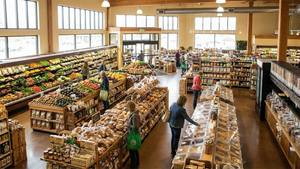The Evolution of Locksmithing: Past, Present, and Future
Locksmithing, among the world’s oldest trades, began in ancient Egypt and Babylon. Early locks were wooden mechanisms that used pins and keys to secure possessions. These rudimentary designs laid the foundation for locksmithing as a craft.
The Romans elevated lock-making by introducing metal components for improved durability and security. They created warded locks, which required a specifically designed key to bypass internal obstructions. During this time, locksmithing gained prestige, and locks became symbols of wealth and status.
In medieval Europe, locksmithing evolved into a blend of function and artistry. Skilled craftsmen created intricate locks for castles and treasures, often spending months on personalized designs to deter tampering. These locks not only protected valuables but also showcased the artisan’s skill and creativity.
Industrial Revolution: Innovation and Mass Production
The Industrial Revolution of the 18th and 19th centuries transformed locksmithing. Machines enabled mass production, making locks more accessible while retaining craftsmanship. Key innovations included Robert Barron’s double-acting lever lock, which added complexity to prevent picking, and Jeremiah Chubb’s detector lock, which could reveal tampering attempts.
Linus Yale Sr. and Linus Yale Jr. made significant contributions during this era. Linus Yale Jr.’s pin tumbler lock, still widely used today, and his father’s combination locks set new security standards. While industrialization made locks more affordable, it also introduced uniform designs that criminals could exploit, prompting locksmiths to innovate further.
20th Century: Adapting to Technology
The 20th century brought rapid advancements in locksmithing. The rise of automobiles created a new niche: automotive locksmithing. Early car locks were simple, but as vehicles advanced, manufacturers introduced ignition keys and transponders, requiring locksmiths to learn new techniques.
Safes, vaults, and time locks also became more sophisticated, resisting drilling and tampering.
Industries like banking and retail relied heavily on locksmiths for asset protection. By the late 20th century, electronic locks and keycards emerged, expanding the profession’s scope to include programming and digital tools.
Modern Locksmithing: The Digital Era
Today, locksmithing merges mechanics, electronics, and cybersecurity. Traditional locks coexist with smart locks, biometric systems, and app-controlled devices. Residential and commercial security now emphasizes automation and remote access, requiring locksmiths to master new technologies.
Automotive locksmithing has grown increasingly complex, with modern car keys featuring transponders and encrypted programming. However, manufacturers often restrict access to proprietary tools, challenging independent locksmiths. In response, many have specialized in reprogramming and bypassing advanced systems, staying competitive through continuous education.
Challenges and Opportunities
Modern locksmithing faces challenges like the rise of subscription-based security models and monopolization by manufacturers. Subscription systems, which bundle locks with monthly fees, reduce demand for traditional locksmith services. To adapt, locksmiths must focus on installing and maintaining these advanced systems.
Monopolization in the automotive industry limits independent locksmiths’ access to proprietary tools, forcing significant investment in specialized training. Despite these hurdles, digital advancements offer opportunities. Locksmiths can expand into cybersecurity, offering services like security audits and vulnerability assessments to protect clients’ digital and physical assets.
The Future of Locksmithing
Emerging technologies like blockchain and AI will shape the future of locksmithing. Blockchain could enable tamper-proof digital keys, while AI-driven systems may adapt to security threats in real time. Locksmiths will need expertise in programming, machine learning, and cryptography to stay relevant.
Education will play a vital role as the trade becomes more complex. Locksmithing programs may combine traditional skills with advanced training in electronics and cybersecurity, ensuring professionals remain at the forefront of industry advancements.
Sustainability will also influence locksmithing’s future. Eco-friendly materials and energy-efficient systems will align with global efforts to reduce waste, with locksmiths integrating these solutions into smart homes and cities.
Conclusion
Locksmithing has evolved from ancient wooden locks to cutting-edge digital systems. Today’s locksmiths are not just tradespeople but also innovators and cybersecurity experts. By embracing technology and continuous learning, they can secure their place in a rapidly changing world, ensuring safety and privacy for generations to come.
Media Contact
Company Name: Premier Locksmith
Contact Person: Nate
Email: Send Email
Country: United States
Website: https://247premierlocksmith.com
More News
View More




Recent Quotes
View MoreQuotes delayed at least 20 minutes.
By accessing this page, you agree to the Privacy Policy and Terms Of Service.